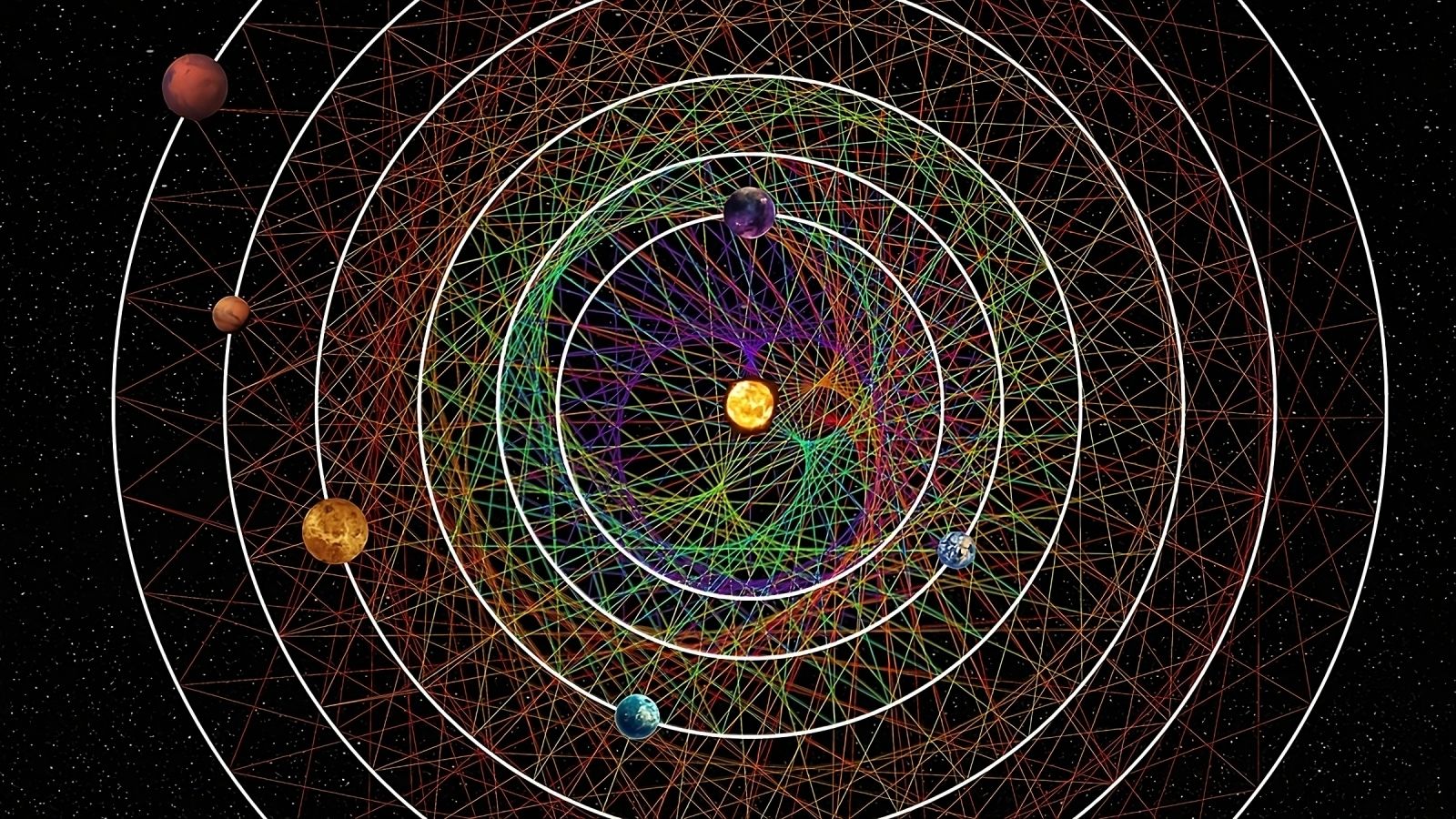Temporal surprise in the "perfect stellar system" 🪐
Follow us on Google News (click on ☆)

The orbits of HD 110067's planets form a harmoniously geometric ballet.
Credit: Thibaut Roger (NCCR PlanetS)
Initial estimates placed the age of this star at around 8 billion years using the Hertzsprung-Russell diagram. However, this method, while effective for stars like the Sun, may be less reliable for low-mass stars. Researchers, therefore, decided to revisit this evaluation by exploring other indicators of stellar aging.
By analyzing HD 110067's magnetic activity and rotational speed, scientists identified markers of a star younger than initially thought. Calcium emissions detected through its light spectra betray intense activity. This high energy level is typical of stars still in the early stages of their life.
Next, the star's rotation helped confirm its relative youth. While the Sun takes about 27 days to complete a full rotation, HD 110067 spins in just 20 days. This suggests it is still slowing down—a natural process for all stars.
These observations enabled the team to date HD 110067 to approximately 2.5 billion years, much younger than the initial 8 billion-year estimate. This revision is based on comparisons with similar stars, such as Sigma Draconis, to refine the stellar aging model.
But what about its exoplanets? Their gravitational choreography could have taken shape in less than a billion years, thanks to tidal locking phenomena. This might explain the meticulous organization of this system despite the relatively young age of its star.
However, the youth of HD 110067 raises doubts about the presence of life in this system. The discovered planets are too close to the star to provide habitable conditions, but worlds invisible to our current instruments might exist in its habitable zone. Detecting them is the goal of our current technologies.
Finally, one hurdle remains: young stars emit strong X-ray and gamma radiation. These rays, far more intense than those of older stars, make the emergence of life even less likely on nearby planets. Further research could nonetheless uncover surprises.